Fly anglers are overloaded with gear choices—rods, reels, boots, waders, lines, packs, bags, boxes, vests, apparel and more. It seems harder and harder to know what's worth coveting and what's worth ignoring. Gear reviews are a great way to explore in-depth what might be right for you, but not every piece of gear is suited to a full-length review and, even if it were, there's simply too much of it to get to. With that in mind, we periodically showcase what's working for us right now, to hopefully offer more helpful feedback on gear that's worth a second look.
All gear is welcome here: new, old, cheap, pricey, and so on. The goal is to provide useful feedback on gear that works—not to help gin up marketing for new products. Sometimes, great gear has just hit the market, other times it's been here doing good work all along.
Douglas ERA fly rod
All fly rod tests should be blind tests. Or, at least, blind-ish. Fly fishers are an impressionable bunch, as are most folks, and it’s not uncommon for anglers to make up their mind about how good or bad a product is just because of its reputation, the brand name stamped on the blank, or, perhaps most of all, its price tag. When asking a trusted source to evaluate a new fly rod, if you’re able to eliminate all of — or at least some of — those influences, chances are the feedback you’ll receive will be a lot more valuable.
This summer, we put the new Douglas ERA (pictured above) in the hands of a few Bahamian fly guides — anglers who could outcast every angler at the lodge, straight into the wind, with their off hand, standing on one leg — and were intentionally soft on the details we shared. As a yet-to-be released rod, the ERA came with no reputation. Several of the testers also weren’t familiar with the Douglas brand (even though Douglas has achieved household name status in the states thanks to the resounding success it has had with its Sky and Sky G rod series, on foreign shores there are still folks unfamiliar with the Phoenix, NY rodmaker). And, most importantly, we didn’t mutter a word about the ERA’s price tag.
The verdict from the guides was unanimous: the ERA was a winner. Smooth, responsive, and, with a pleasing, medium-fast action that bends deep into the blank, the ERA throws a seriously nice line. When we told them that the 8-weight ERA they were casting costs only $169, bewilderment ensued. Douglas, for its part, markets the ERA as a rod “designed to deliver outstanding performance at a price that is accessible for all anglers.” We think they’ve done just that, and more. And the guides in the Bahamas agree. In fact, the Douglas ERA just might be one of the best fly rod values on the market right now.
— Chad Shmukler

YETI Rambler Bottle with Chug Cap
Is it possible to love a water bottle? We didn’t think so. It’s a water bottle, after all. But man, were we wrong. One could argue we should be accustomed to YETI taking ordinary, everyday items and making them new and exciting by redesigning and building them better than everyone else, but color us surprised, again.
The defining feature of the YETI Rambler Bottle with Chug Cap is its two-part “Chug Cap,” which is made from shatter-resistant plastic. The lower part of the cap features a gasket-lined, wide opening that connects to the insulated YETI Rambler bottle, with a mouth- or sip-sized upper. Seal your bottle with the included YETI TripleHaul handle, which offers a leak-proof seal and easy carry.
If you’re thinking this sounds sort of just like every other water bottle you’ve ever used, trust us, it’s not. The wide opening bottom of the Chug Cap makes refills and cleaning easy, and the sip-sized upper even manages to dispense water in a more pleasing way than your average bottle (yes, seriously). Add in thoughtful touches like the fact that the TripleHaul top allows access to the sip-top with just a half turn and that the entire works is dishwasher safe, and it all adds up to another instance of YETI making the ordinary extraordinary.
— Chad Shmukler

Swarovski EL 8.5x42 binoculars
Fly fishers who hunt big game have a serious advantage over those who don’t. Why? Because they know about good glass. And I’m not talking about sunglasses, or fiberglass rods, or fiberglass drift boats. No, most successful big game hunters learn early on that really good binoculars are absolutely vital for spotting game. After all, you can’t shoot what you can’t see.
The same basic idea applies to those of us who fish big waters. If you’ve ever walked the banks of Idaho’s Henry’s Fork, or fished the main stem of the Delaware, or floated the Missouri between Wolf Creek and Craig — or if you’ve stalked knee-deep across a remote saltwater flat — you’ve encountered a situation where high quality binoculars will help you spot and catch more fish.
For thirty years, I relied on a pair of exceptional Swarovski binoculars to see whitetails and elk in the wilds of Montana, and to pick out rising trout on our big western rivers. Unfortunately, those binoculars, along with a couple of gorgeous custom Desch knives, disappeared from my home while we were traveling and a house-sitter had some friends over. As you can imagine, I was beyond bummed.
Fast forward to 2021, and a new pair of Swarovski binoculars — the EL 8.5 x 42 — now grace my time afield. I suppose it’s possible that there are better binoculars out there somewhere … but if there are, I sure haven’t run across them. These new Swarovskis are stellar; easy to use, and to carry, and the optics are beyond superb. If there are trout rising, or bonefish tailing, and you can’t see them with the EL 8.5 x 42s, just chalk up your issues to operator error.
Long story short, if you take your time on the water seriously, and if you can afford the very best, then these Swarovskis will give you a huge, osprey-like advantage when it comes to spotting fish. They are truly wonderful binoculars.
— Todd Tanner

Loon Fly Tying Accessories
Loon's fly tying tools and accessories are a favorite among fly fishers across the world. Some of their latest stuff, however, really stands out.
Bench Rings
Do you spend half your time tying flies, looking for that misplaced bag of dubbing or beads? If your tying desk is a continual mess, then Loon Bench Rings can help. They come in a few different sizes, and their use is simple: any bag with a hole in it can slide onto the ring, making it that much easier to find later. Make rings full of dubbing, hooks, beads, and anything else you need quickly, so you're not digging through your desk for hours on end.
Vise Pawn
Not all fly tying vises come with the best materials holder. That's where the Loon Vise Pawn comes into play. It's a magnetic pawn that holds materials - like hackle, flashabou, or zonked rabbit - out of the way so you can either take full advantage of your rotary vise, or simply have an easier time of tying your flies.
Razor Scissors
Sharp scissors make a world of difference for tying flies efficiently. Loon’s Razor Scissors are, as their name implies, sharp and deadly. They'll work well on everything from small hackles to larger chunks of rabbit fur.
— Spencer Durrant

Costa Untangled Sunglasses
Costa has long been known for making some of the best fishing sunglasses on the market. What's so impressive about their Untangled Collection of frames is that it shows a company putting its money where its mouth is. Costa talks the talk of conservation, but the Untangled Sunglasses show the company walking the walk. The frames of every pair of sunglasses in Costa’s Untangled Collection are built entirely from recycled fishing nets. And, Costa’s recently released second generation of Untangled frames comes in a much wider range of frame styles, colors, and lens options than their predecessors. The Costa Untangled Collection deserves your attention.
— Spencer Durrant

Orvis PRO HD Insulated Hoodie
If you're the kind of angler who loves the peace and quiet of a cold winter day on the water, then this new Orvis PRO HD Insulated Hoodie should be the next piece of gear you buy. Orvis doesn't put out substandard gear, and this Hoodie is no exception. It's seriously warm and insulating, thanks to a hefty dose of PrimaLoft Gold insulation that keeps you warm even when wet. The shell is abrasion-resistant and waterproof to a point. Orvis also took great care to build a Hoodie that doesn't inhibit your movement while on the water. Most big, insulating coats tend to restrict your range of motion; the PRO HD Insulated Hoodie doesn't. Pick this up, and you'll be plenty warm in even the worst weather.
— Spencer Durrant

Montana Brothers 904 fly rod
Earlier this year, John Juracek, who is one of the finest fly casters alive, caught my attention when he mentioned a new fly rod company called “Montana Brothers.” In a piece on stellar trout rods, John stated that the Montana Brothers 4 weight “is a superb tool for delicate dry fly and nymph fishing, which is how I spend the vast majority of my fishing time.”
I’d never heard of Montana Brothers, but I made a point of contacting the company last summer and asking if I could see one of their rods. They obliged — they actually sent me two different models to fish — and here’s what I feel comfortable sharing right now.
First, you can’t buy a Montana Brothers rod just yet. While they should be available to the angling public relatively early in 2022, everything that they’re currently producing is already spoken for.
Second, they’re making two different 9’ four weight rods right now. That’s it. If you’re looking for something else — a 5 weight, an 8 weight, a 3 weight — you’re out of luck for the moment.
Third, I’ve been teaching fly casting for almost 30 years, and writing about fly fishing for a quarter of a century, and the Montana Brothers 904 is the single finest fly rod I’ve ever cast.
I should repeat that last line. The Montana Brothers 904 is the single finest fly rod I’ve ever cast.
Which doesn’t mean that you should make a pre-Christmas pilgrimage to Montana, or that you should e-mail Dan Daufel of Montana Brothers today and beg him to build you a rod. It does, mean, though, that you should keep your eye open for the Montana Brothers website when it goes live in the not-too-distant future.
I’ll be writing about these special rods, and going into far more detail, in 2022. In the meantime, just remember the name: “Montana Brothers.”
— Todd Tanner




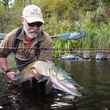
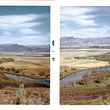
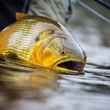













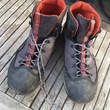
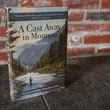




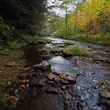




Comments